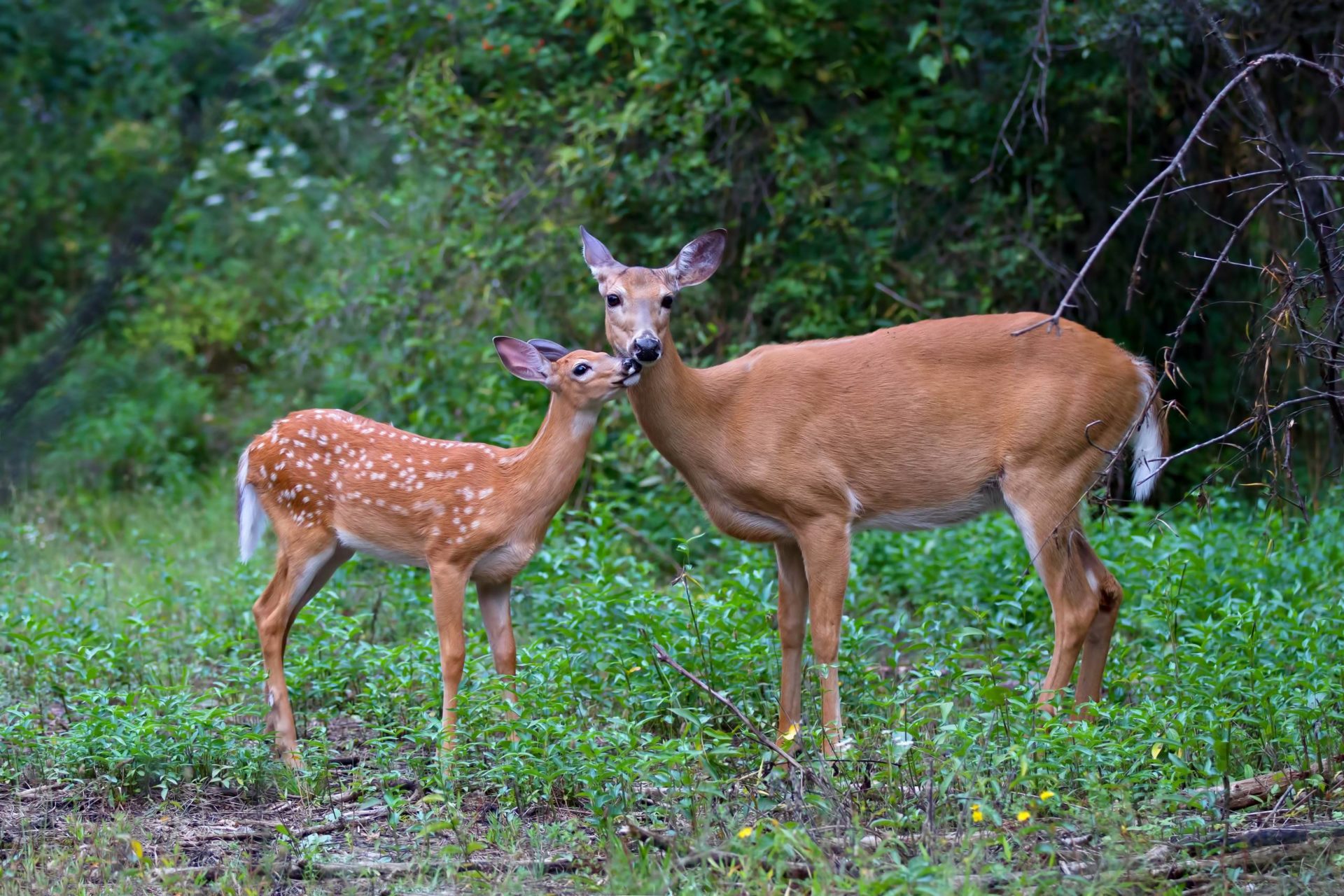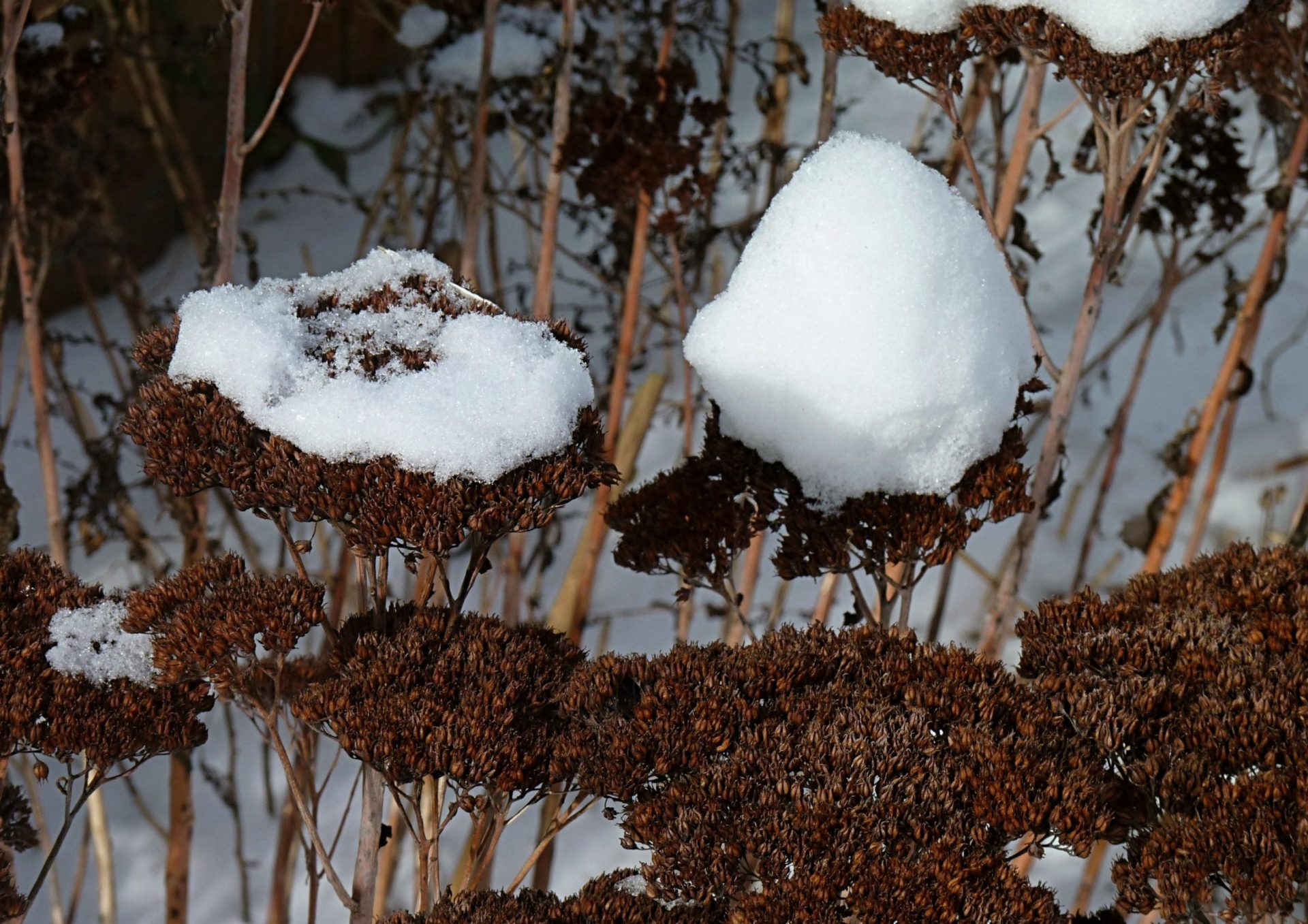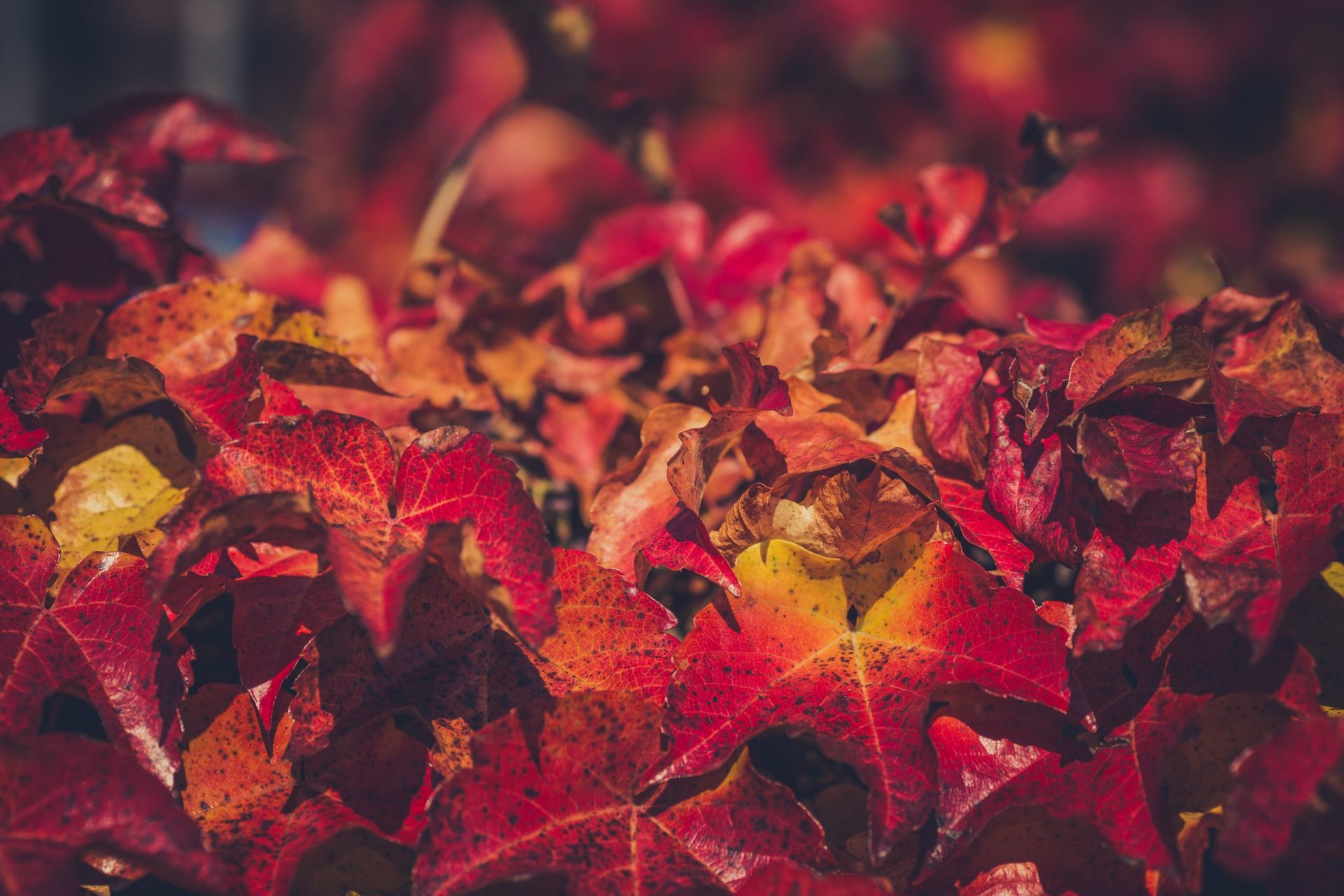1. Get your shed in shape
Take the opportunity during the winter to repair, sharpen, and oil your tools so they’ll be ready to use in the spring. Don’t forget lawnmower and power tool maintenance and winterizing. Make sure any liquid chemicals are stored where they won’t freeze. Granular and powdered products need only be kept dry. Additionally, any ceramic pots or planters should be moved inside where they will not freeze and crack.
2. Protect your plants from the elements
Dry cold winds, bright reflected sun, and road salt can damage foliage very quickly during the winter. Your plants are an investment so make sure to protect them!
Buy a ready-made pop-up barrier in our Garden Center, or build an A-frame out of plywood. It should be sturdy enough to carry a snow load without collapsing against the plant. Also place stakes or reflective markers around your garden beds so that you know where to avoid piling snow.
Tree wraps are a good idea if you have a tree with fragile bark. Wrap from the ground level all the way up to the branches; do this as late as possible in the fall, checking periodically to make sure the wrap is not constricting the tree.
This time of year we recommend applying an anti-transpirant such as Wilt-Pruf or Wilt-Stop, to protect your plants from drying out. This clear protective spray is made from a derivative of pine resin, which adds a protective film to the surface of needles and evergreen leaves. Bonus: You can also use it on decorative holiday greenery, to keep your displays fresh even longer!

3. Scare off hungry animals
The best tactic to ward off animals is to use a variety of methods, including scents and sprays, tactile deterrents, visual scares, and barriers. Start early, so that critters are discouraged from even considering your garden for their next meal. Change it up so that the wildlife doesn’t become used to one product.
Scents, granular repellents, and sprays such as Deer-Scram, Mouse-Magic and Repels-All are convenient to use and should be reapplied regularly throughout the winter. One of our favorite products for repelling deer is Milorganite, which is a naturally-derived recycled fertilizer that also benefits the soil. It does double duty because the deer also hate it!
In addition you can use visual wards like mylar ribbon, decoy owls, and anything shiny, sparkling, or kinetic to confuse and repel animals. Employ sound by hanging windchimes, or use a sonic repellent device. Deer in particular are sensitive to touch, so hanging threads of monofilament on your fencing or barriers will frighten them when they come near.
Barriers and fences are most effective when they create the illusion that they can’t be jumped. Fencing should be a minimum of 6 feet high, preferably 7 or 8. You can use stakes and netting, or wrap special plants in burlap to keep critters from nibbling.

4. Clean up and compost
Thorough clean-up can go a long way toward preventing disease and insect problems the following season, and it will also discourage rodents from nesting in your valuable plants. Remove leaves, branches and fruit from the area around any plant that has shown signs of disease and dispose of them.
Healthy leaves, stems, fruit and stalks can be added to the compost pile, but don’t put diseased plants in there! Water your compost pile and turn it one last time before colder temperatures shut down biological activity. If you use any additives to boost composting, do so before November.
You can also put down compost or a high-nitrogen fertilizer such as Milorganite in the late fall prior to ground freeze (or early spring) to feed the soils and give plants a boost the following spring.
Consider the benefits of leaving some plants in place to create winter beauty. Ornamental grasses, Echinacea, and Sedum look lovely with a dusting snow. Think, too, about whether leaving some plant material will provide food for winter birds & other wildlife. Hollow stalks are also a prime place for pollinating insects to hibernate.
5. Water your plants!
The best insurance that plants will come out healthy the other side of winter is to make sure they’re well hydrated going into winter. Watering late into the year is especially important for broadleaf evergreens, needled evergreens, and new plants. October and November are statistically dry months, so if the summer has been dry it’s especially important to provide extra water in the fall. When the ground is frozen, from roughly December through March, plants do not “drink”. Unless you water, plants may go without significant water for SIX MONTHS!
Water until the ground freezes or at least past Thanksgiving. Don’t over water. Plants require less water in the late fall than they do in the heat of high summer. The goal is to keep the root ball uniformly moist but not soggy. One inch of natural rainfall per week or an equivalent watering by you is usually sufficient.








